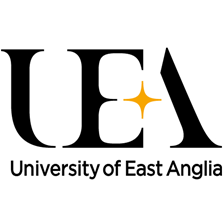
Why students are best placed to help students understand feedback
To succeed at university, students must navigate new environments with unfamiliar ground rules. They must negotiate relationships, understand the requirements of their courses and grapple with new assignment and assessment processes.
Receiving, understanding and learning from feedback is a key part of progressing through university studies, yet this can be a challenge for students. Bringing a range of previous experiences and skills with them to university, the unsettling anticipation of waiting for feedback combined with difficulty understanding the feedback language can create barriers to learning.
Peer-to-peer dialogue
An oft-asked question is how we can improve students’ understanding of feedback so that they use it to actively guide their learning. Our answer is to use peer-to-peer dialogue with more experienced second- or third-year students, alongside feedback activities. Peer learning enables the use of a common language and a shared repertoire among students based on similar experiences. This helps students learn about assessment and feedback in an accessible way as they discuss it with “equals”. These conversations enable students to build the confidence and resilience to regard feedback as a way of moving forward rather than a barrier.
- Resource collection: Putting feedback at the heart of assessment
- Reframing feedback as a valuable learning tool
- Feedback rather than ranking: how to start ungrading in order to improve learning
Peer dialogue and peer learning, in this instance, involves second- and third-year students working as mentors with newer students in informal study groups. This can be done in several ways, or a combination of the following:
- Informally by asking second- and third-year students to share their experiences of assessment and learning on the course in timetabled first-year sessions. The mentor students might be identified by teaching staff or personal advisers and should be offered references to evidence the contribution and time taken to support their peers.
- Using an institution-wide Peer Assisted Learning (PAL) or equivalent (often known as PASS, SI) scheme to recruit mentors on a yearly cycle, often paid or incentivised through training and certificates to evidence the skills they have gained. These mentors are recruited centrally by the PAL team, given formal training, and supported throughout the academic year. Mentors can be asked to support in class and in separately timetabled, or non-timetabled, sessions.
Student mentors are encouraged to talk about their experiences of the course and the pinch points or key skills that are needed to be successful, through an open dialogue with first-year students. The key skills or pinch points identified by the school might be used to anchor the directions and aims of the conversation, although students are encouraged to talk freely about their experiences and feelings related to assessment and feedback.
Demystifying marking criteria and learning the language of feedback
It’s important that students understand the language being used to assess their work, especially in new assessment formats. Introduce the marking criteria and invite students who have experience of being marked using the criteria to mentor those less familiar with the language. Here are some suggested activities:
- Ask students to discuss the marking criteria and to write them in their own words. Ask them to identify and define words that they’re not clear about. Often students highlight words such as “scholarship” and “criticality”. Student groups can talk about what the different criteria mean in the context of assessment, and where they might have experience of developing these skills or learning outcomes.
- To assess their understanding of the marking criteria, ask students to mark an exemplar piece of work. Together, the new students and peer mentors can discuss their thoughts, questions and rationale for giving their marks and feedback.
Mentors bring examples of their own experiences being assessed and receiving feedback to support students in crystallising their understanding of why feedback is given and what it can be used for.
Assessment, personal reflection and learning
Once students have started to understand the criteria and the language of feedback, they can reflect on the learning opportunity offered by assessment and start to practise agency over their learning. Effective activities include:
- Ask students to use the marking criteria to give themselves a grade, provide a rationale for this and to highlight to their marker any specific feedback they would like on the assignment to personalise comments a little. Encourage them to avoid asking questions that will result in a “yes” or “no” response.
- More experienced peers can share where they find specific feedback most useful, how they understand it and use it in future assessments.
Embedding peer dialogue into teaching around assessments provides students with opportunities to talk in the language of feedback and to try out and understand criteria. It places them at the centre of their learning so they can get more value from feedback as the course progresses.
Callum Perry is the Peer Assisted Learning (PAL) graduate intern coordinator and Rebecca Westrup is associate professor in education, both at the University of East Anglia.
If you found this interesting and want advice and insight from academics and university staff delivered direct to your inbox each week, sign up for the Campus newsletter.




